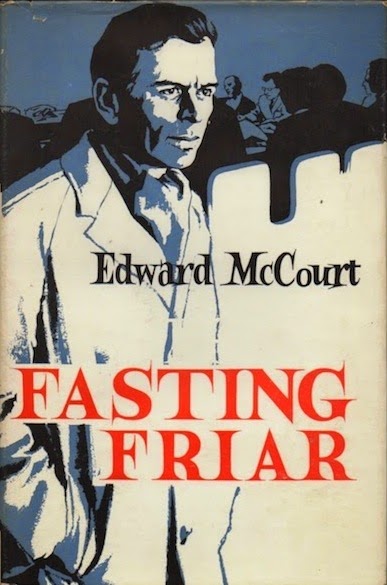December. Time has come to admit that we've failed.
Eleven months ago, with my friends Chris Kelly and Stanley Whyte, I set out to read each and every book by Richard Rohmer within the calendar year. We're right now on
our eighteenth. While that figure may seem impressive, there are still twelve to go.
Who'd've thunk he'd written so much?
We all knew what we were getting into. I was pretty certain that Rohmer had published something in the area of thirty books. What I didn't anticipate was that they would be so hard to find. A child of the 'sixties, I well remember a time when Rohmer topped bestseller lists. His books were on display at the local WH Smith and could be bought at every drug store in town. I expected – as did Stan and Chris – that used copies would be plentiful and cheap. Hell, last December I picked up a copy of
Red Arctic for a dollar.
What I didn't know is that after his 1973 smash
Ultimatum, Rohmer's sales began to decline. The first break in his string of bestsellers came in 1984 with the flop
How to Write a Best Seller. There's irony for you. By the end of that decade, he was no longer published in mass market – readers of thrillers will recognize the significance of that fact. Second printings have been rare.
How rare?
The only book that has seen any sort of second life in the past quarter-century is the one we're currently reading:
John A.'s Crusade. First published in 1995 by Stoddart, two years ago Dundurn reissued the novel as
Sir John A.'s Crusade and Seward's Magnificent Folly.
"About the only general suggestion I can make about choosing a title is that it should in some way suggest the plot," says Rohmer in
How to Write a Best Seller.
John A.'s Crusade did just that. Set during the months leading to Confederation, it sees the future prime minister travelling about Europe – by train, warship and carriage – on a secret mission to purchase Alaska from the Russians. Meanwhile across the pond, William Seward, Andrew Johnson's Secretary of State, is working on the very same goal.
If anything,
Sir John A.'s Crusade and Seward's Magnificent Folly suggests even more of the plot. And, as my pal Stan points out, it also provides something of a tie-in to the film
Lincoln, in which Seward figures prominently.
I wonder whether
Sir John A.'s Crusade, Seward's Magnificent Folly and a Visit to Highclere Castle was ever considered. Too long, I suppose.
Highclere Castle features prominently on the cover of the new edition; Sir John A a little less so. Cast your eyes down and you'll find this banner: "BRITAIN'S REAL DOWNTON ABBEY AND CANADA'S BIRTH".
I wasn't aware of any connection between Confederation and
Downton Abbey. Truth be told, I didn't see that the show has had much to do with Canada at all. Then I read the back cover:
In late 1866, John A. Macdonald and other Fathers of Confederation arrived in London to begin discussions with Britain to create Canada. Macdonald and two of his colleagues stayed briefly at Highclere Castle in Hampshire, the stately home of the Fourth Earl of Carnarvon, Britain's colonial secretary. Those are the facts.
Today Highclere Castle is widely known as the real-life location for the popular television series Downton Abbey. In Richard Rohmer's novel, Macdonald talks with Carnarvon at Highclere about legislation to give Canada autonomy, the danger of Irish Fenian assassination plots, and the proposed American purchase of Alaska from Russia.
It is indeed a fact that "Macdonald and two colleagues stayed briefly at Highclere Castle". Those two colleagues were George-Étienne Cartier and Alexander Galt; being an overnight stay theirs was several hours longer than that offered today's paying visitors.
So, yeah, "stayed briefly" seems about right.
What irks is the author's new Preface. All about the tenuous link between the novel and television show, for the most part the thing is sigh-inducing:
Downton Abbey, as it appears in the magnificent television series is actually Highclere Castle, often known as Carnarvon Castle. It was there that much of the Downton Abbey series was and will be shot.
This sentence follows, challenging conventional history :
It was also there that the difficult quest for Canada's status as an ultimately self-governing monarchy nation truly began on December 11, 1866, as this piece of historical fiction demonstrates.
Never mind the Great Coalition, the Charlottetown Conference, the Quebec Conference and the London Conference, Rohmer has it that an after-dinner conversation over port and cigars marks the true beginning of the country we call Canada. The claim is absurd, and is made truly shameful by the simple fact that this piece of historical fiction demonstrates no such thing. Macdonald and colleagues do nothing more than report on current negotiations… oh, and Fenians!
Here, in full, is how the real Carnarvon described Rohmer's birth of a nation in his diary:
 |
from The Political Diaries of the Fourth Earl of Carnarvon, 1857–1890
Cambridge UP, 2010 |
See how much work goes into reading Richard Rohmer?
Imagine how much time has been wasted walking across rooms to retrieve books thrown against walls.
Related posts:















































